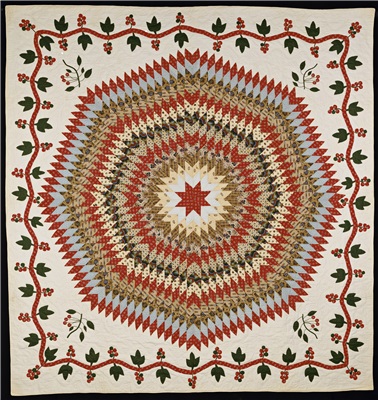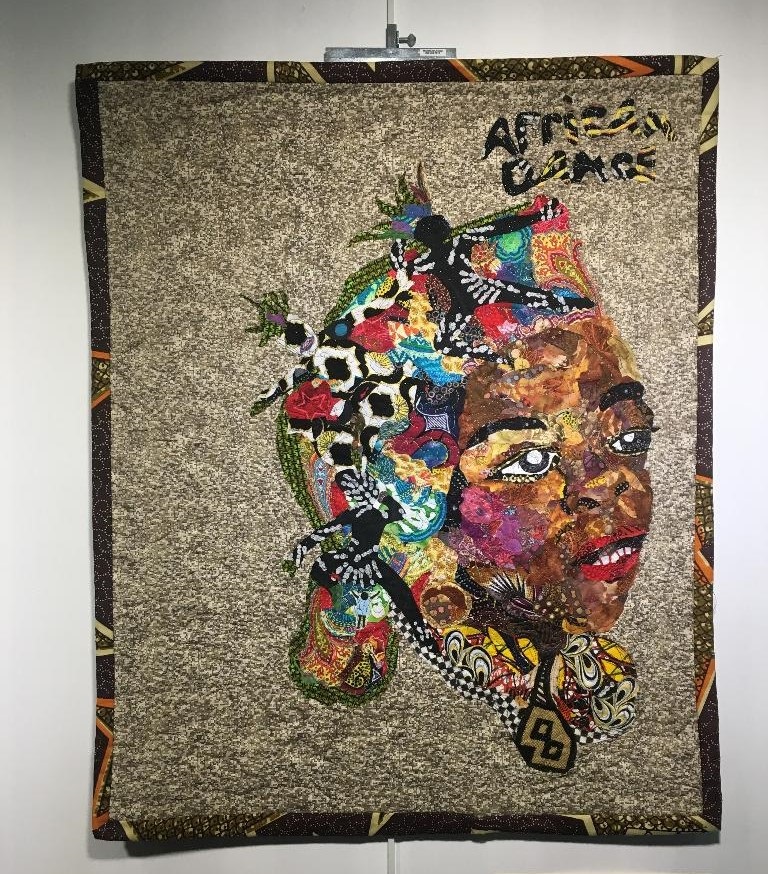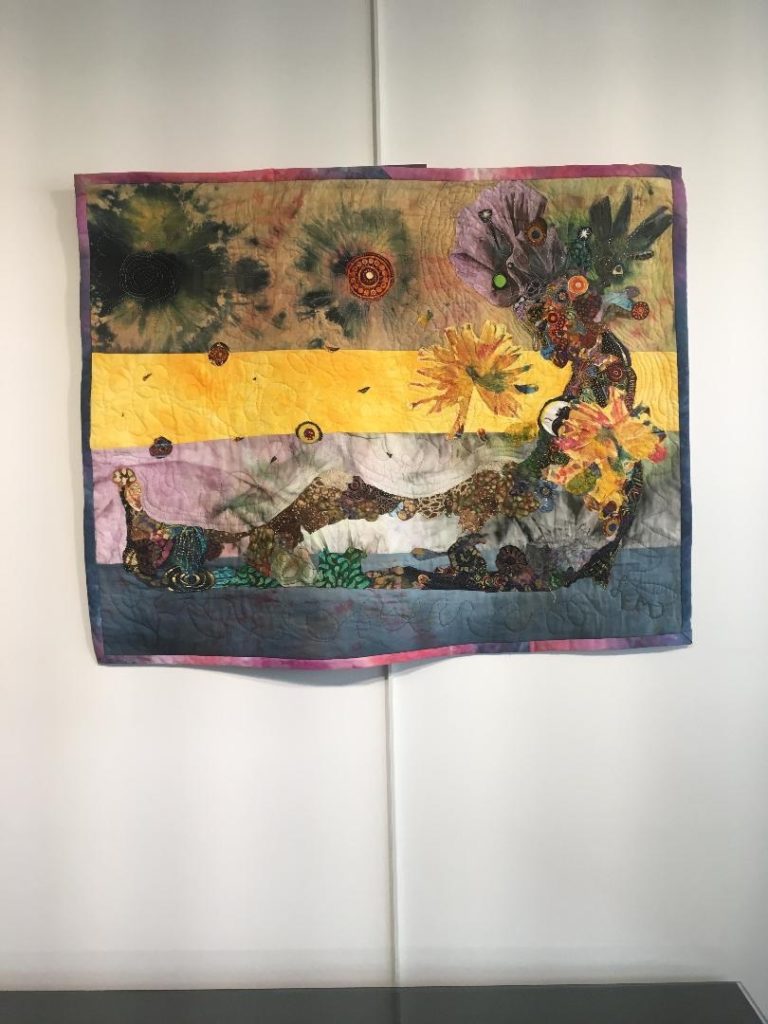One of the centerpieces of my upcoming book on Elizabeth Colt, her life through the lens of visual objects, will highlight art production by women living in Hartford. Women, everyday women who created beauty in their domestic spheres. In my blog post, “Miranda Robinson: The Sampler,” I introduced needlework and the pictorial compositions by women with needle and polychrome fibers. Other feminine arts I am exploring is quilting.
“Anonymous Was A Woman,” by Mirra Bank, a lively celebration of traditional American Art, describes the quilt, “that most anonymous of women’s arts, rarely dated or signed, summarizes more than any other form the major themes in a woman’s life–its beginnings, endings and celebrations retold in bits of colored cloth.” Below is an example by 19th century woman Anna A. Wildman from the collection at the Wadsworth Atheneum. “Sunburst and Grapevine” evokes a modernist aesthetic from geometric patterns that “burst” like a kaleidoscope within its winding floral border.

http://www.thewadsworth.org
At the Hartford Public Library, “Hartford History Center” I was introduced to the prolific quilts by contemporary fiber artist and Hartford resident, Linda Martin in the exhibition, “Sharing Stories.” Her work inspires me to consider including in my book visual objects, artistic expressions by women in the 21st century. Incorporating contributions by contemporary women, I think, will help inform my reader to the ways Hartford’s rich cultural and artistic is continued today.
Linda Martin’s quilts carry on a long tradition, especially in the African American community, to tell stories. Martin’s layers of “small pieces of synthetic and natural fabrics, each no larger than two inches,” result in engaging portraits commemorating important figures. My favorite in the exhibition is of famed dancer and choreographer Dr. Pearl Primus, “credited with bringing African dance to American audiences.” Notice the ways Martin builds up the structure of her face with a sculptural quality, embedding small dancing figures throughout her headscarf. Her interpretation of her subject is fully expressed using colorful fabrics and overlapping layers of fused fabric exposing raw edges. Martin says her technique “evolved from mosaic patterns into free-form using the unorthodox technique ‘freehand patchwork.’ Her portraits give a “voice through the visual of the portrait’s persona.”

“Dr Pearl Primus”
Image Credit: Colored Girl Art

“Arising”
I especially appreciate this evocative work because it was inspired by women “sexually abused by men in authority.” “Arising” depicts a woman who is waking up to hr power and control in her universe! I especially love her wild, ornamented hair.
https://www.coloredgirlart.com
Please learn more about Linda Martin at her website https://www.coloredgirlart.com) and at Hartford History Center at the Hartford Public Library http://hhc.hplct.org.
